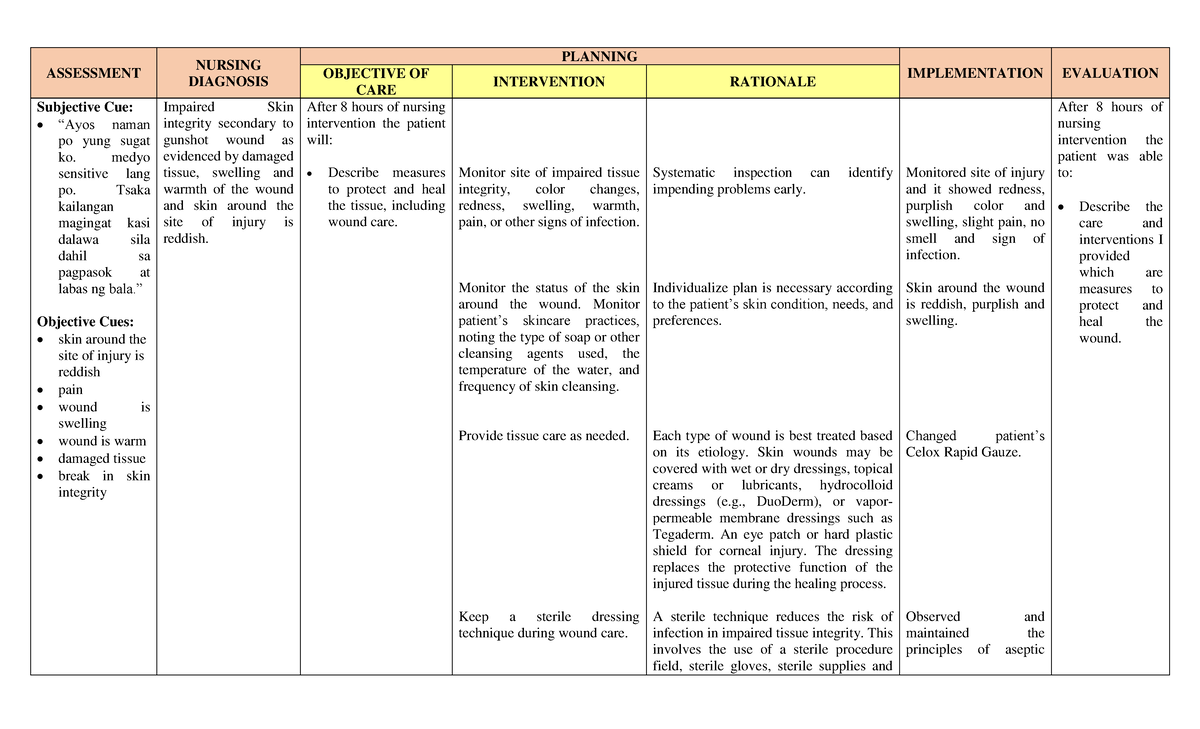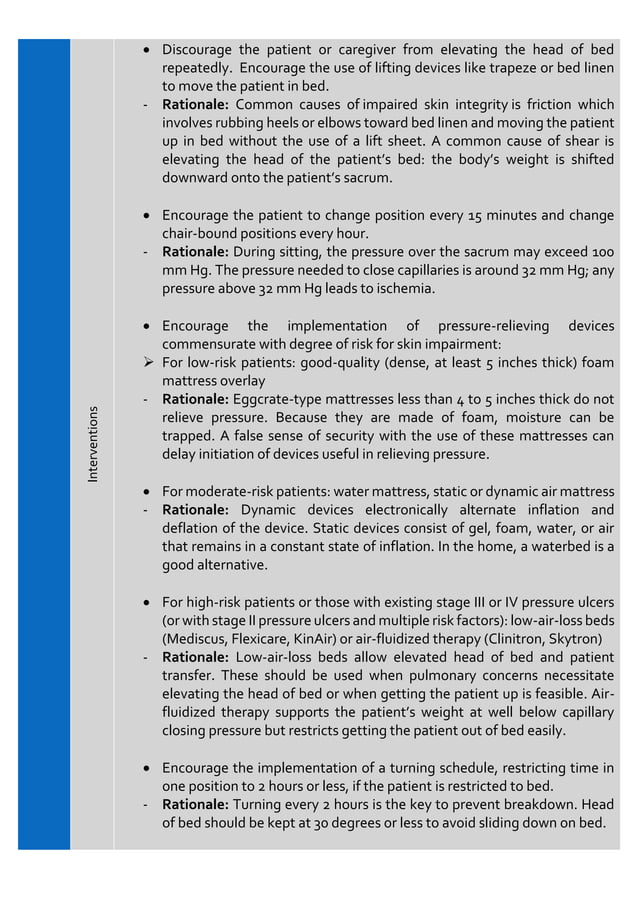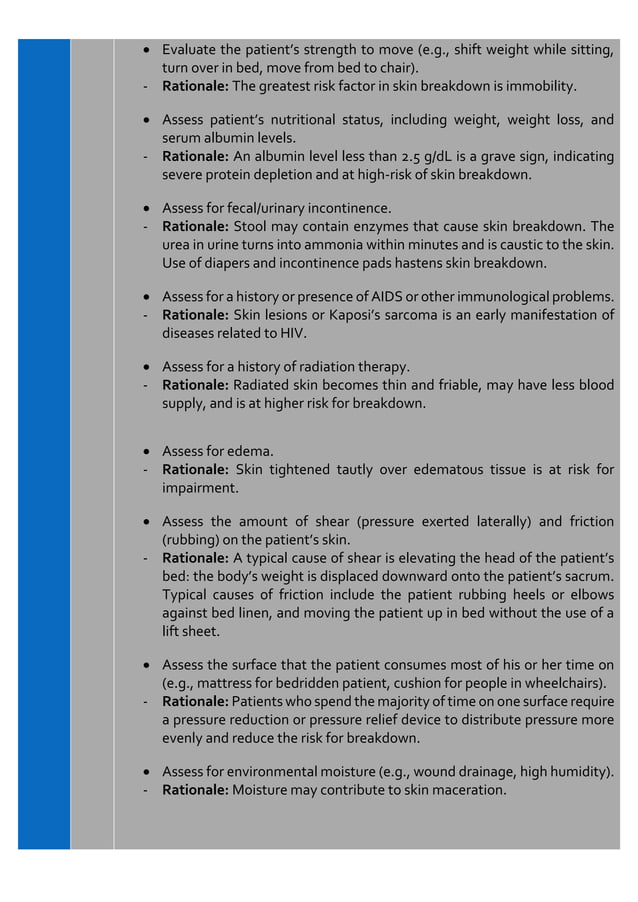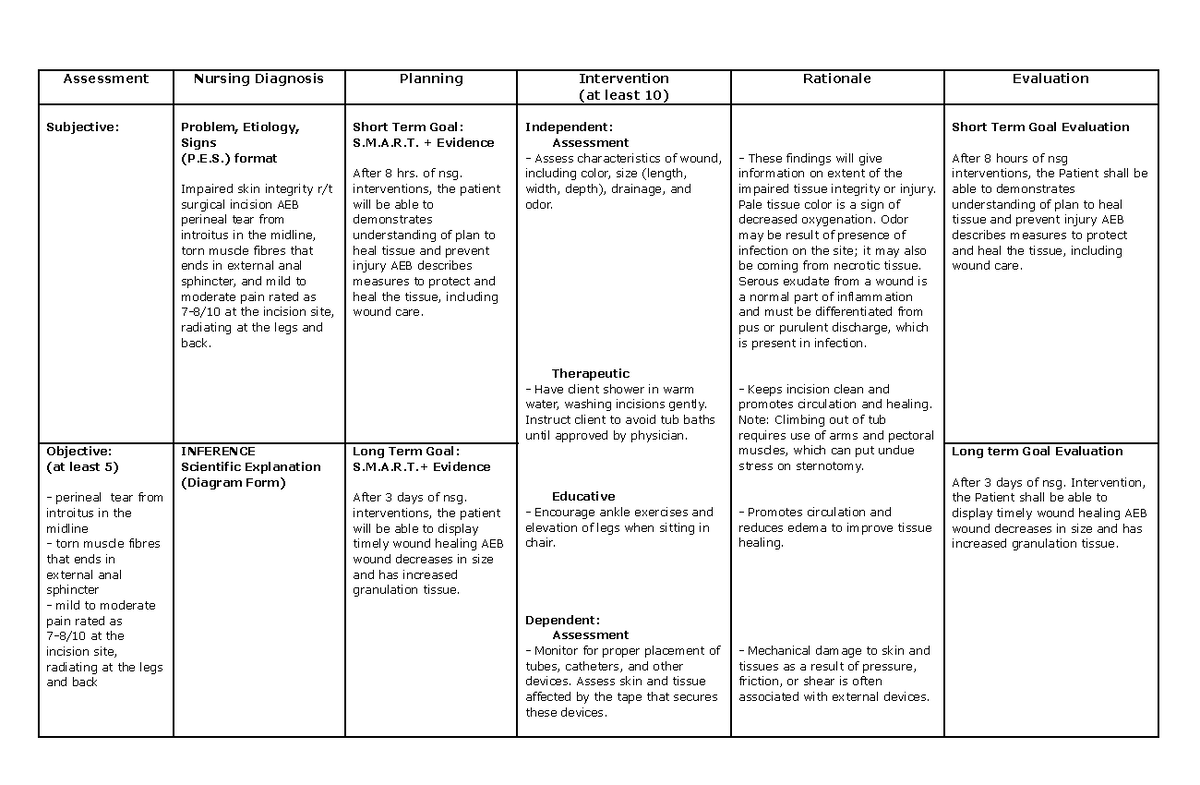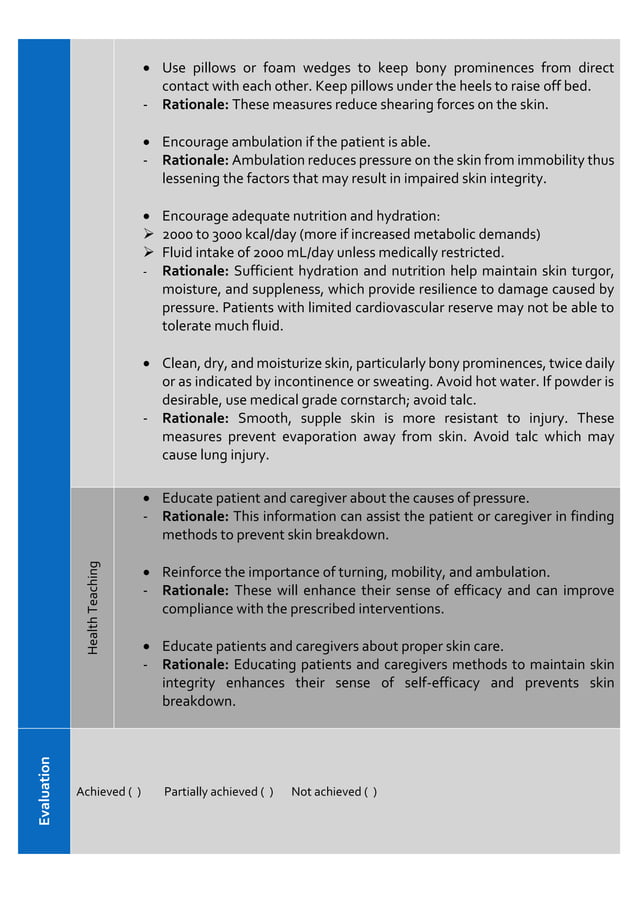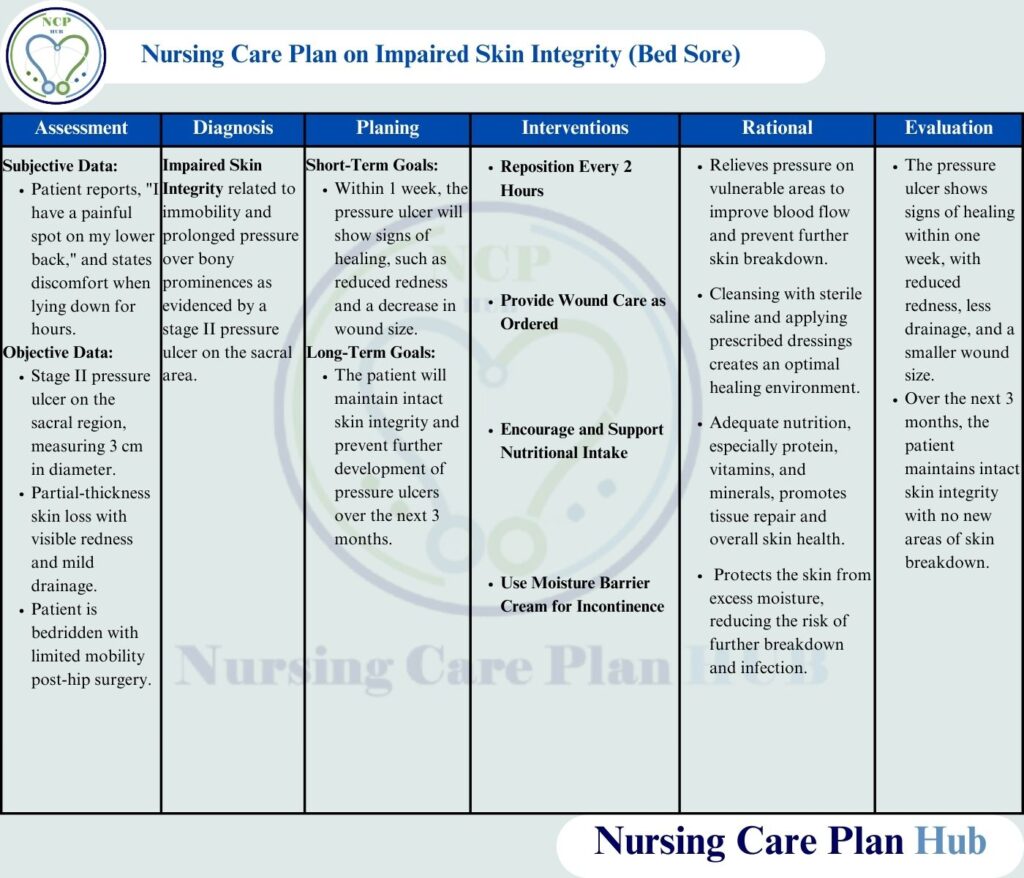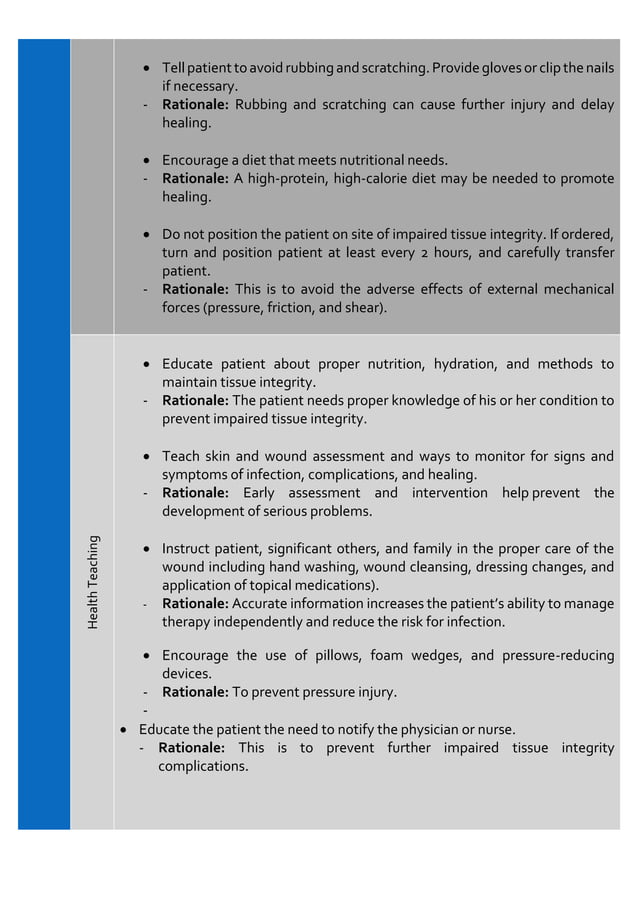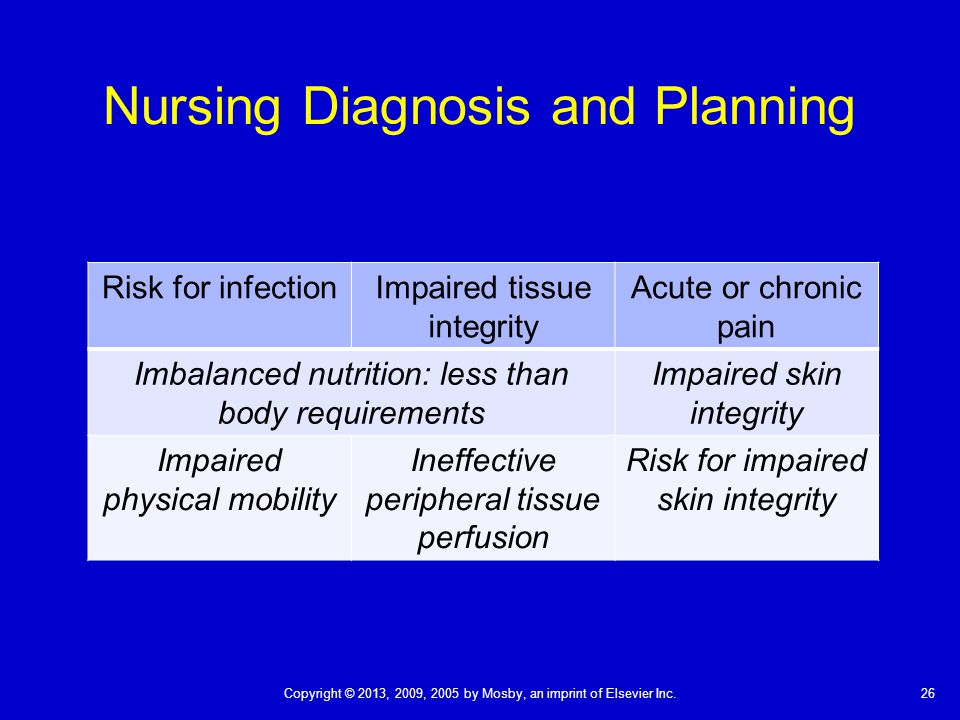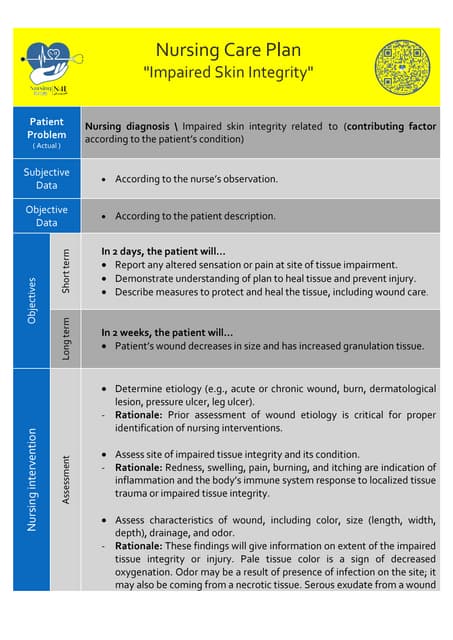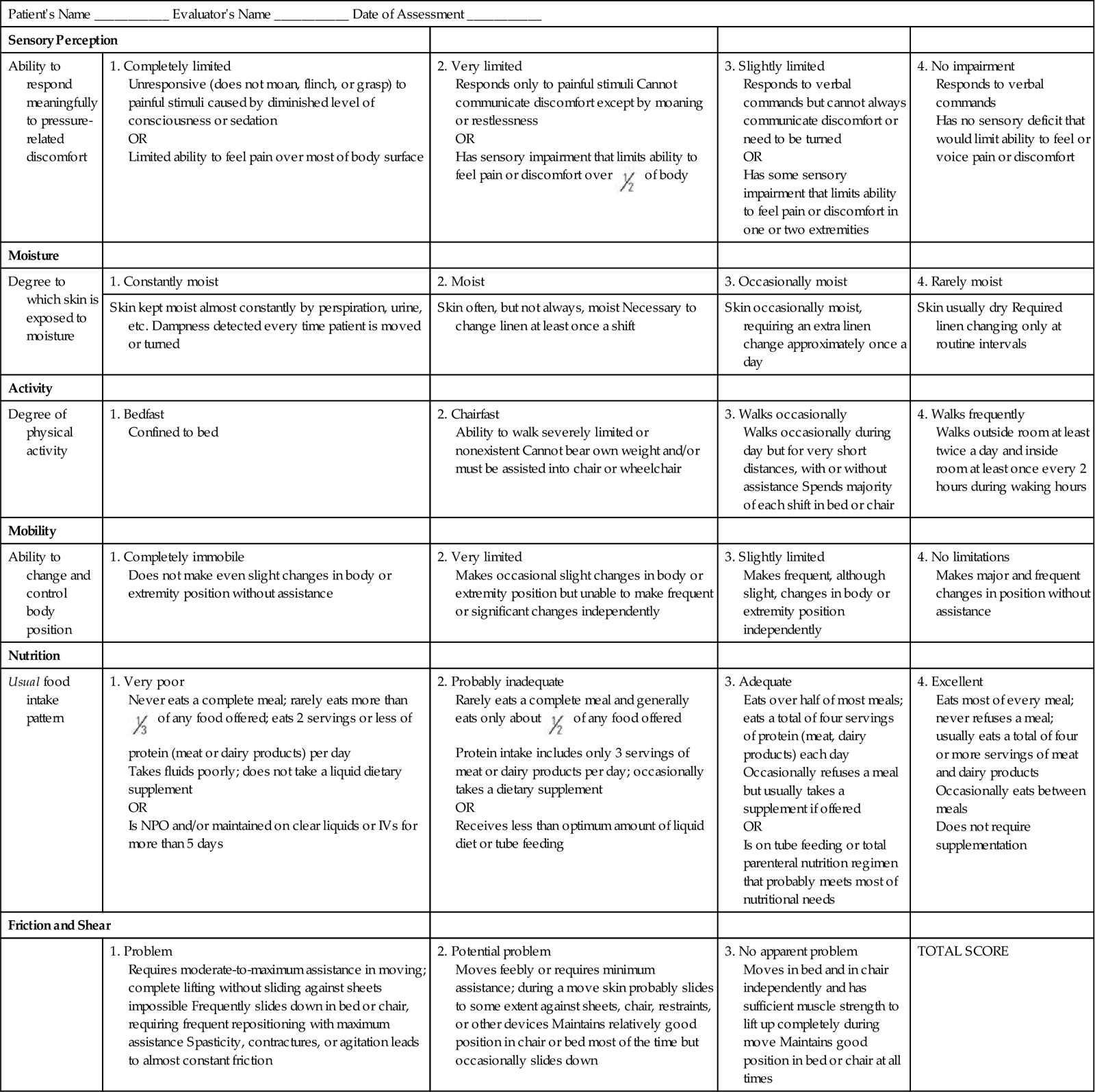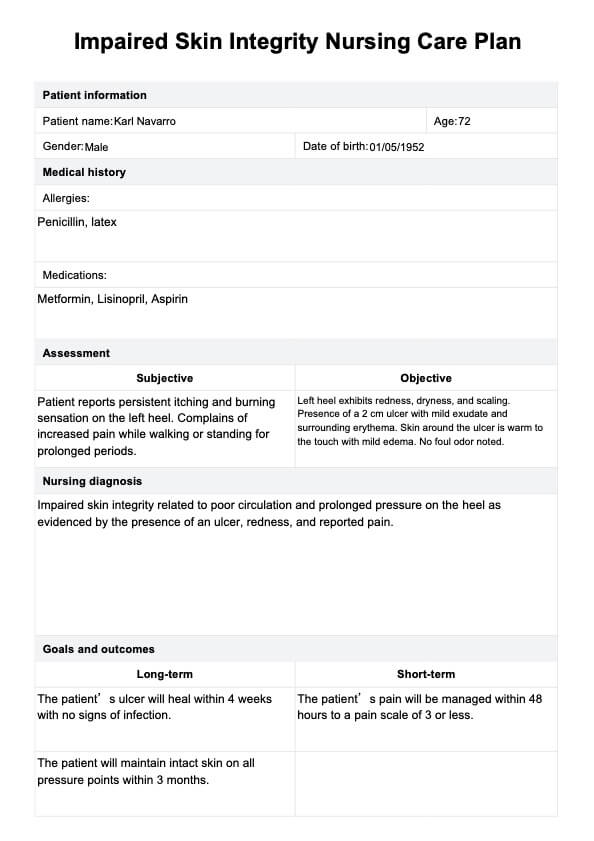Short Term Goal For Impaired Skin Integrity

Imagine a gentle breeze, carrying the scent of lavender and chamomile, wafting through a sun-drenched room. Inside, a therapist carefully tends to skin, fragile and worn, a testament to battles fought and challenges overcome. Their touch is deliberate, a soothing balm, focused not on some distant, unattainable ideal of perfect skin, but on something far more immediate and meaningful: comfort, relief, and a short-term victory against the persistent threat of skin breakdown.
The aim is clear: improve impaired skin integrity. This isn't about chasing eternal youth or flawless complexions, but about providing immediate relief, preventing further damage, and fostering a sense of well-being in individuals whose skin has been compromised by injury, illness, or the inevitable march of time.
Understanding Impaired Skin Integrity
Impaired skin integrity, a term frequently encountered in healthcare settings, refers to damage or alteration to the epidermis and/or dermis, the outer layers of our skin. It can manifest in various forms, from minor abrasions and superficial cuts to more severe pressure ulcers (bedsores) and surgical wounds.
Pressure ulcers, in particular, pose a significant challenge, especially for individuals with limited mobility, such as the elderly or those with spinal cord injuries. The Centers for Disease Control and Prevention (CDC) estimates that millions of people are affected each year, highlighting the widespread impact of this condition.
Beyond pressure ulcers, impaired skin integrity can arise from a multitude of factors. Surgical incisions, burns, trauma, infections, and even chronic conditions like diabetes can compromise the skin's protective barrier, leaving it vulnerable to further damage and infection.
The Short-Term Goal: A Foundation for Healing
While long-term healing is always the ultimate objective, focusing on short-term goals is crucial for managing impaired skin integrity effectively. These immediate objectives serve as stepping stones, creating a favorable environment for the body's natural healing processes to take place.
The primary short-term goal is typically to prevent further skin breakdown. This may involve reducing pressure on vulnerable areas, protecting the skin from moisture and friction, and meticulously cleansing and dressing wounds.
Pain management is another vital aspect of the short-term approach. Addressing discomfort not only improves the patient's quality of life but can also encourage them to participate actively in their own care, such as repositioning and following prescribed treatment regimens.
Immediate Actions: Protecting and Promoting Healing
Achieving these short-term goals requires a multifaceted approach. Regular skin assessments are essential for identifying areas at risk and detecting early signs of breakdown.
Repositioning patients frequently is paramount, especially for those who are bedridden or chair-bound. Specialized support surfaces, such as pressure-relieving mattresses and cushions, can also help to redistribute weight and minimize pressure on bony prominences.
Proper wound care is another cornerstone of the short-term strategy. This includes gently cleansing the wound with appropriate solutions, applying dressings that promote a moist wound environment, and protecting the surrounding skin from maceration (softening due to prolonged exposure to moisture).
Nutritional support also plays a critical role. Ensuring that individuals receive adequate protein, vitamins, and minerals can help to bolster their body's ability to repair damaged tissues.
"Effective management of impaired skin integrity requires a proactive and individualized approach," emphasizes Dr. Emily Carter, a leading wound care specialist. "Focusing on short-term goals allows us to address immediate needs and create a foundation for long-term healing."
The Human Element: Compassion and Connection
Beyond the technical aspects of wound care, the human element is equally important. Providing compassionate and empathetic care can make a significant difference in a patient's experience.
Active listening, patient education, and emotional support can help to alleviate anxiety, promote adherence to treatment plans, and foster a sense of hope. This is particularly vital for individuals who may be feeling isolated or discouraged by their condition.
Building a strong therapeutic relationship is key. When patients feel heard and understood, they are more likely to trust their caregivers and actively participate in their own healing journey.
Challenges and Opportunities
Managing impaired skin integrity can present numerous challenges. Limited resources, staffing shortages, and complex medical conditions can all complicate the process.
However, advancements in wound care technology and a growing emphasis on preventative strategies are creating new opportunities. Innovative dressings, negative pressure wound therapy, and telehealth consultations are helping to improve outcomes and enhance patient access to care.
Furthermore, ongoing research is shedding light on the underlying mechanisms of wound healing, paving the way for more targeted and effective treatments.
The Ripple Effect: Beyond the Immediate
While the short-term goal focuses on immediate relief and prevention, its impact extends far beyond the immediate. By improving comfort, preventing complications, and fostering a sense of well-being, short-term interventions can have a profound ripple effect on an individual's overall health and quality of life.
Reduced pain and improved mobility can lead to increased independence and social engagement. Preventing infections can minimize the need for antibiotics and hospitalizations, saving both time and resources.
Ultimately, the short-term goal of improving impaired skin integrity is an investment in a healthier, happier future for those whose skin has been compromised.
Looking Ahead: A Continuous Journey
The journey to restore and maintain healthy skin is often a continuous one. As individuals age or experience changes in their health, their skin may become more vulnerable to damage.
By embracing a proactive approach, prioritizing preventative measures, and focusing on both short-term and long-term goals, we can help to protect and nurture this vital organ, promoting comfort, dignity, and well-being throughout life.
The gentle breeze, the scent of lavender, the careful touch – these are all symbols of the compassion and commitment that are at the heart of effective skin care. It is a reminder that even in the face of adversity, hope and healing are always possible.

